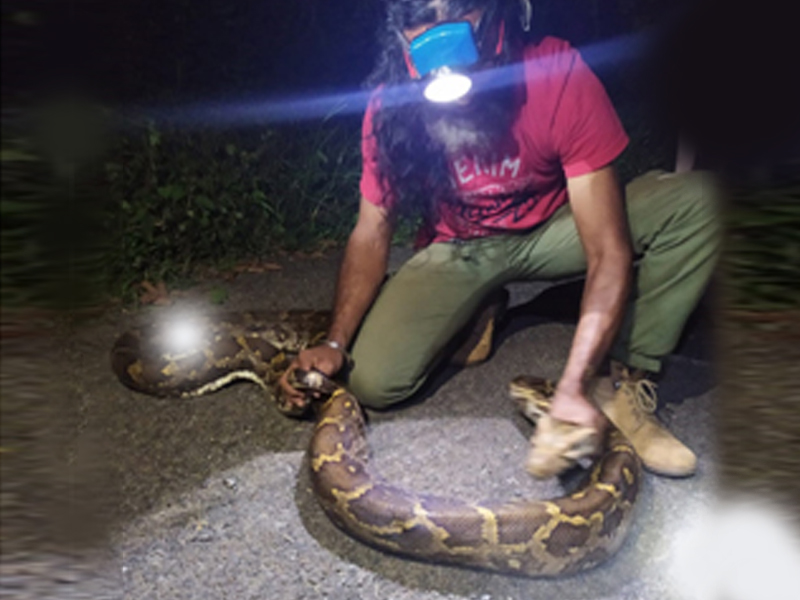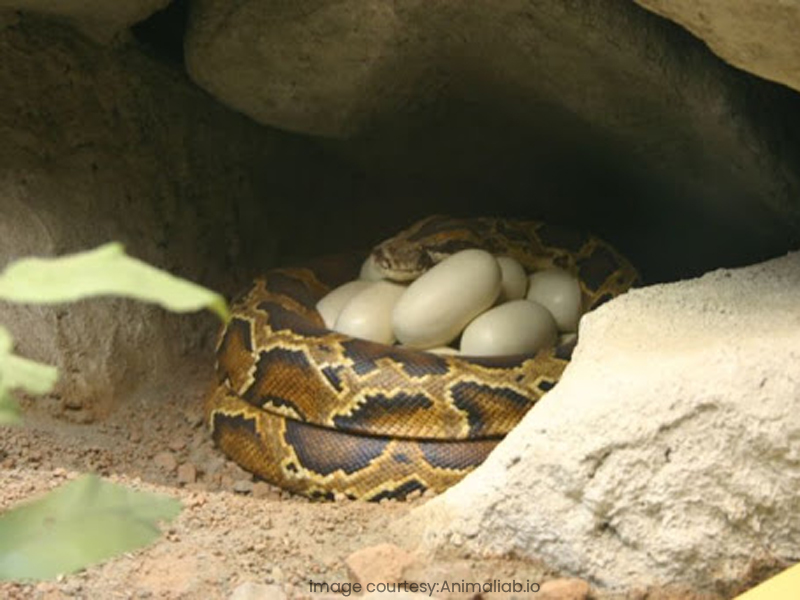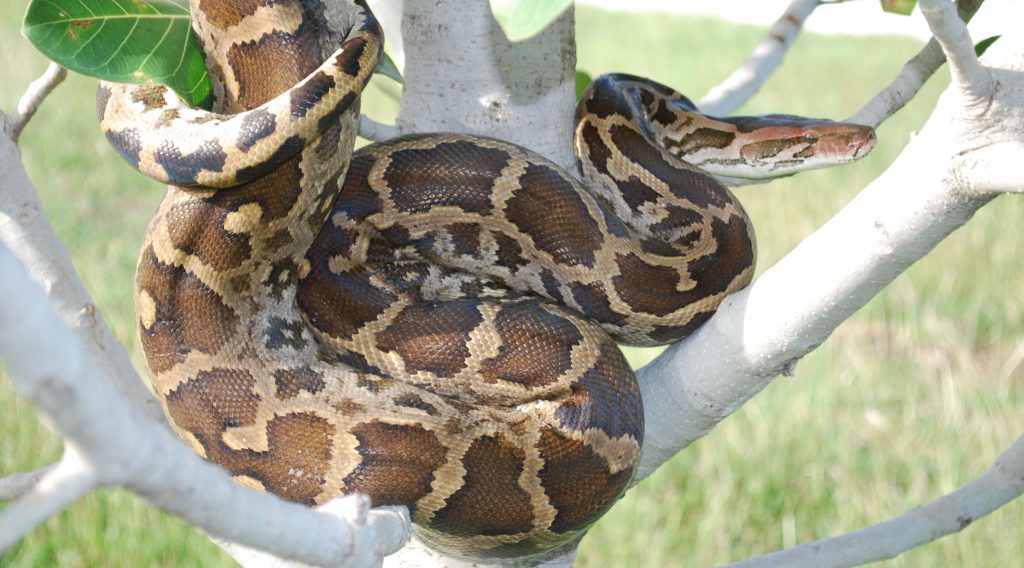MSSBG is excited with the surprise visit of two adult Pythons in the month of May. Mr. Satheesh, an employee of MSSBG, spotted a Python near the Microbiology lab little away from the water source on 22nd May measuring around 7 feet. A few days later on 26th May the other was spotted on the road leading to the farm house. This was comparatively larger to the first one measuring around 10 feet. Both were spotted in the night and Mr Basheer an expert rescuer and a long-time friend and associate of MSSBG came and rescued the serpents and released them in a safe forest area in co-ordination with the forest officials. According to Basheer, Pythons are totally harmless rather beneficial to humans as they prey upon rodents and wild boars. He reiterates that most of the cases, snakes are harmless as long as we don’t abuse or harm or trigger the defense response in them. He also says Pythons should be allowed to live wherever they are found as they are great friends of farmers being a great predator of Rodents and Pigs that cause damage to cultivated crops in an agrarian environment. Herpetologists say snakes have no vested interest in attacking human beings, and any bite occurrences are almost exclusively a defensive response to a perceived threat. Given this fact, it is reasonable to assume that, if left alone, the risk posed by snakes would be negligible.


Regular spotting of Indian Rock Python in this area is a matter of pride for us that our campus is providing ample habitat for this mighty reptile. This is also a clear indicator that the MSSBG and the surrounding area stretching to Manikunnumala is part of a healthy and thriving ecosystem with plenty of floral and faunal diversity. The Indian Rock Python is found in a wide range of habitats including grasslands, swamps, rocky foothills, marshes, woodlands, open jungles, and river valleys and they rely on a permanent source of water. This protected area with minimal human intervention is an abode for varieties of plants and animals to interact and survive. It is our responsibility to preserve and protect the habitat for the Indian Rock Python to thrive in this area and save the sensitive food chain. Habitat protection, regulation of activities and a shift in human attitude are critical for conserving the snake population which form a key link in the food chain. They act as predators, and as prey. They help maintain a healthy ecosystem and environment.

The Indian Rock Python (Python molurus) is a large non-venomous species native to Indian subcontinent and Southeast Asia. In India the species is distributed in wide range of habitats including rocky foothills, swamps, grasslands and rainforest. Indian Rock Python is yellowish or whitish with the blotched patterns varying from brown to dark brown black in shades. It is generally lighter colored than the Burmese python and reaches usually 10ft.
Indian Rock Pythons are very often mistaken to be dangerous because of their size and face extreme threat due to prevalent misunderstandings. Awareness about the pythons being non-venomous is important to safeguard this reptile being victimized during the man-animal conflict when they venture into human surroundings.

This species is protected under Schedule I of the Wildlife Protection Act, 1972. It is also listed under Appendix I of the Convention on International Trade in Endangered Species of Wild Flora and Fauna (CITES), due to extensive trades for its meat or skin (fashion industry) as well as the pet animal status. It is mentioned in the list due to the continuous and stark habitat destruction.
Dr. V Shakeela
Director, MSSRF CAbC
Picture Courtesy
- https://www.deccanchronicle.com/lifestyle/pets-and-environment/151017/handle-snakes-with-love-care-says-ahammed-basheer.html
- http://animalia.bio/indian-python
